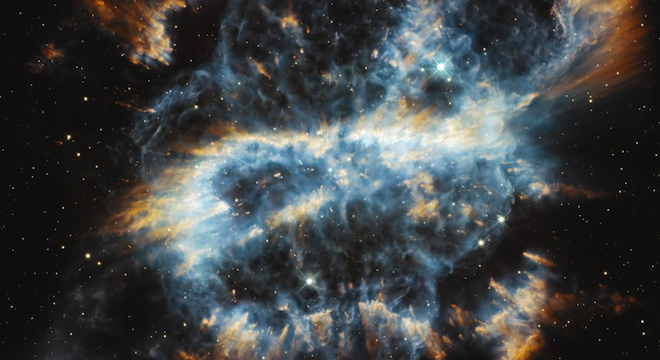No, this image is not one of the Mayan apocalypse. NASA has a tradition of releasing spectacular Hubble images in time for the winter holidays, such as a 2011 photo of a space “snow angel,” and 2012 was no different.
This year, NASA published a breathtaking photo of a planetary nebula called NGC-5189, located some 3,000 light years away in the constellation Musca (the fly).
Nebulas like the one shown here are formed by dying stars — ones like our own Sun except that have run out of fuel and are ejecting their outer layers, which become superheated by the remaining stellar material and billow outward as clouds of gas, turning into beautiful patterns and shapes. The nebula pictured, NGC-5189, is said to resemble a “glass-blown ornament,” according to NASA, hence it being featured as this year’s holiday favorite.

This particular nebula is somewhat mysterious, though, as NASA scientists aren’t sure why the shape isn’t as simple as other observed nebulae. One hypothesis is that it was actually formed by a binary — or twin — star system, similar to the fictional planet Tatooine, Luke Skywalker’s homeworld in “Star Wars.”
The image was captured in October 2012 by the newest Hubble instrument, the Wide Field Camera 3, installed on the Hubble Space Telescope back in 2009 in one of the final missions of the Space Shuttle program. The camera used specific filters designed to capture the nebula’s most energetic gas and elemental ejections, including “fluorescing sulfur, hydrogen, and oxygen atoms,” according to NASA.









